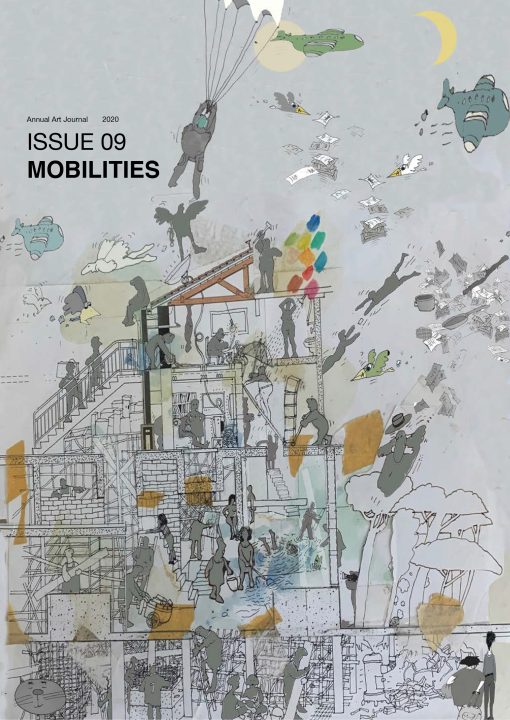On 21 July 2012, Beijing continued to experience heavy rain. Water rose to a depth of four metres under the Guangqumen Bridge. Zhao Zhao went out on an air mattress and gallivants under the Guangqumen Bridge, amidst the flood.
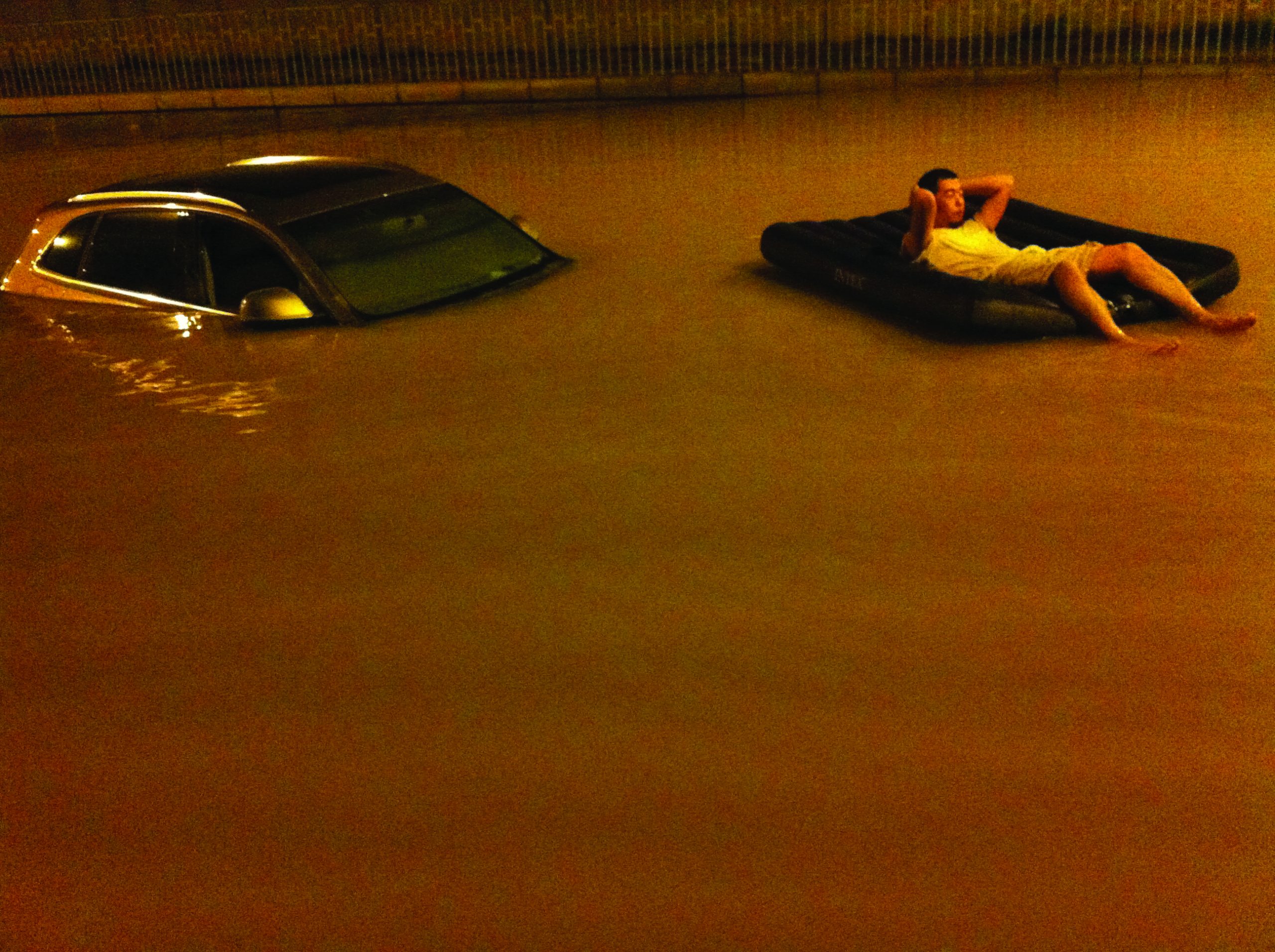
Still from Rain (2012), HD colour video, with sound, 6:17 mins. Courtesy the artist.
Ho Tzu Nyen, The Critical Dictionary of Southeast Asia (2012–ongoing),
screenshot from cdosea.org. Courtesy the artist.
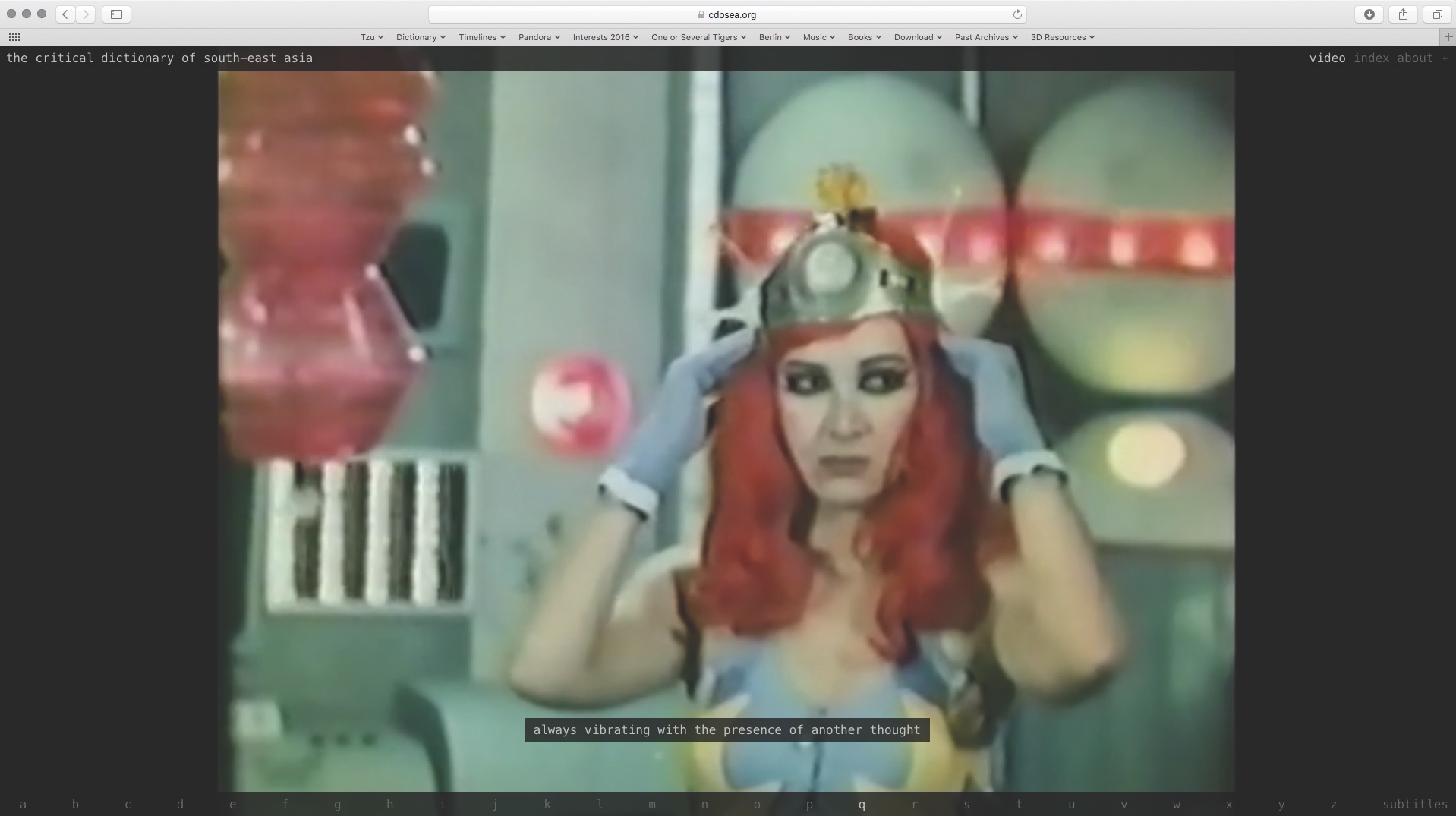
Ho Tzu Nyen, The Critical Dictionary of Southeast Asia (2012–ongoing),
screenshot from cdosea.org. Courtesy the artist.
In 2013, Zhao Zhao grew deeply interested in the trials of Bo Xilai, a member of the Communist Politburo, and his wife Gu Kailai, accused of corruption and murder in one of the most-talked about events in the recent history of China’s political struggle. “Inspired” by the stories uncovered during their trials, Zhao Zhao set up four works to “re-enact” the sex-murder scandals and family dramas revealed in the trials, which had attracted huge popular attention and public voyeurism. He “translated” the keywords: Slap, Secret Love, Leather Shoe and Family (2014) in order to elevate the improper exchange between the suspects into unlikely radical actions.
— Hou Hanru, “Zhao Zhao: Another Kind of Weiquan Art?” in Provocateur: Zhao Zhao (Flash Art Publishing, 2017).
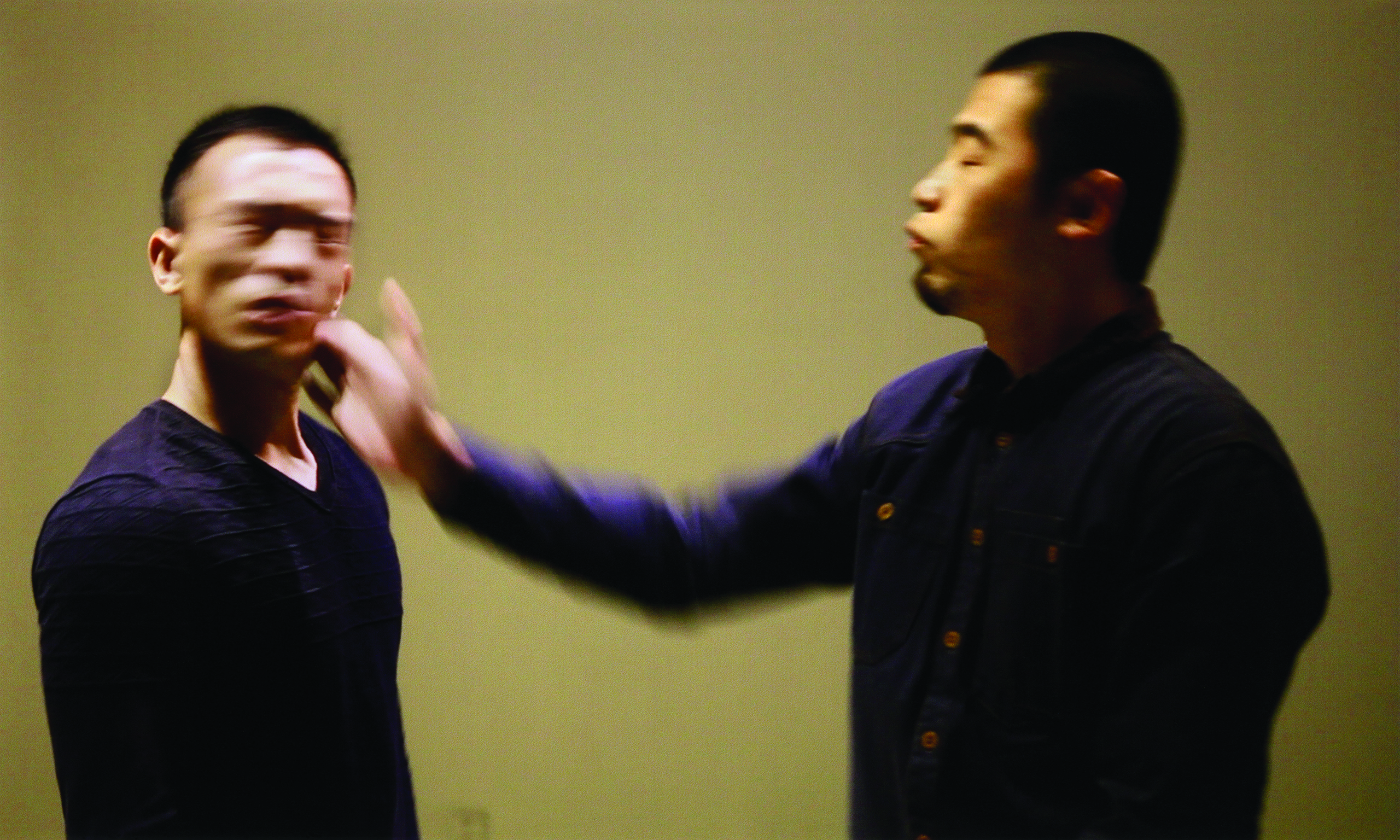
Zhao Zhao, Slap (2013), performance, digital C-print, 100 x 150 cm. Courtesy the artist.
In the first part of the series Slap, Secret Love, Leather Shoe and Family, through an open call by Zhao Zhao, volunteer Zhao Haixing agreed to be slapped on the left and right sides of his face with the artist’s right hand. Completed on 20 October 2013, at 20:20:20 hrs.
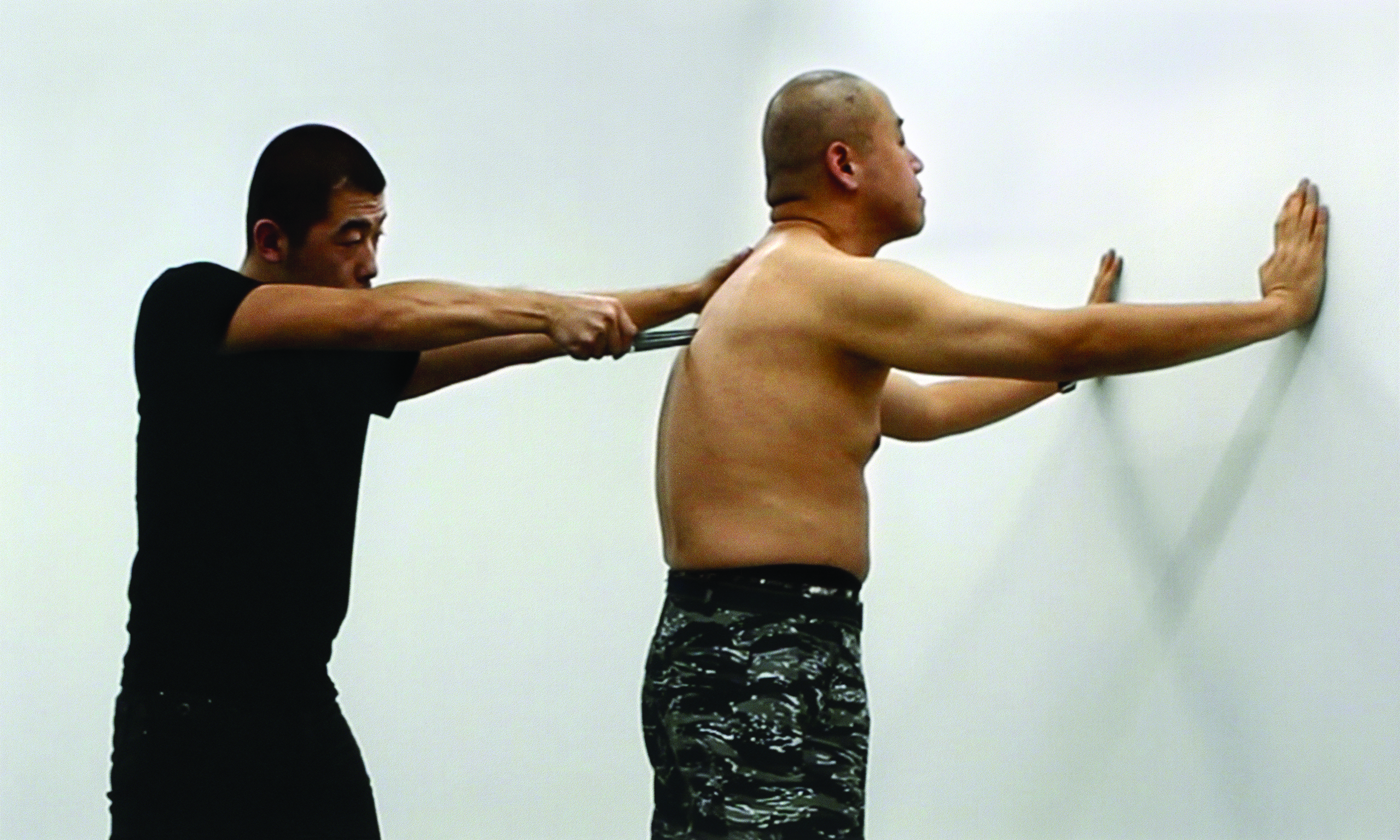
Zhao Zhao, Secret Love (2014), performance, digital C-print, 100 x 150 cm. Courtesy the artist.
Slap, Secret Love involved volunteer Sun Yuan agreeing to let Zhao Zhao, using his right hand, stab him with a knife. Completed at 9:00 p.m, on 27 November 2014 at 305 Caocangdi, Beijing.

Zhao Zhao, Leather Shoe (2014), performance, digital C-print, 100 x 150 cm. Courtesy the artist.
For third part of the series Slap, Secret Love, Leather Shoe, and Family, Zhao Zhao gifted the knife used to stab Sun Yuan in Secret Love to the next volunteer who managed to convince the artist to part with the knife.

Zhao Zhao, Family (2014), performance, digital C-print, 100 x 150 cm. Courtesy the artist.
In last of the series Slap, Secret Love, Leather Shoe, and Family, again, through the open call, Zhao Zhao was invited as a guest to the home of a family of six. The aim was to prolong the visit way past the welcome of the host. The conversations started at noon on 5 December 2014 and lasted till 2:40 a.m. the following day, when the artist was chased out by the host.
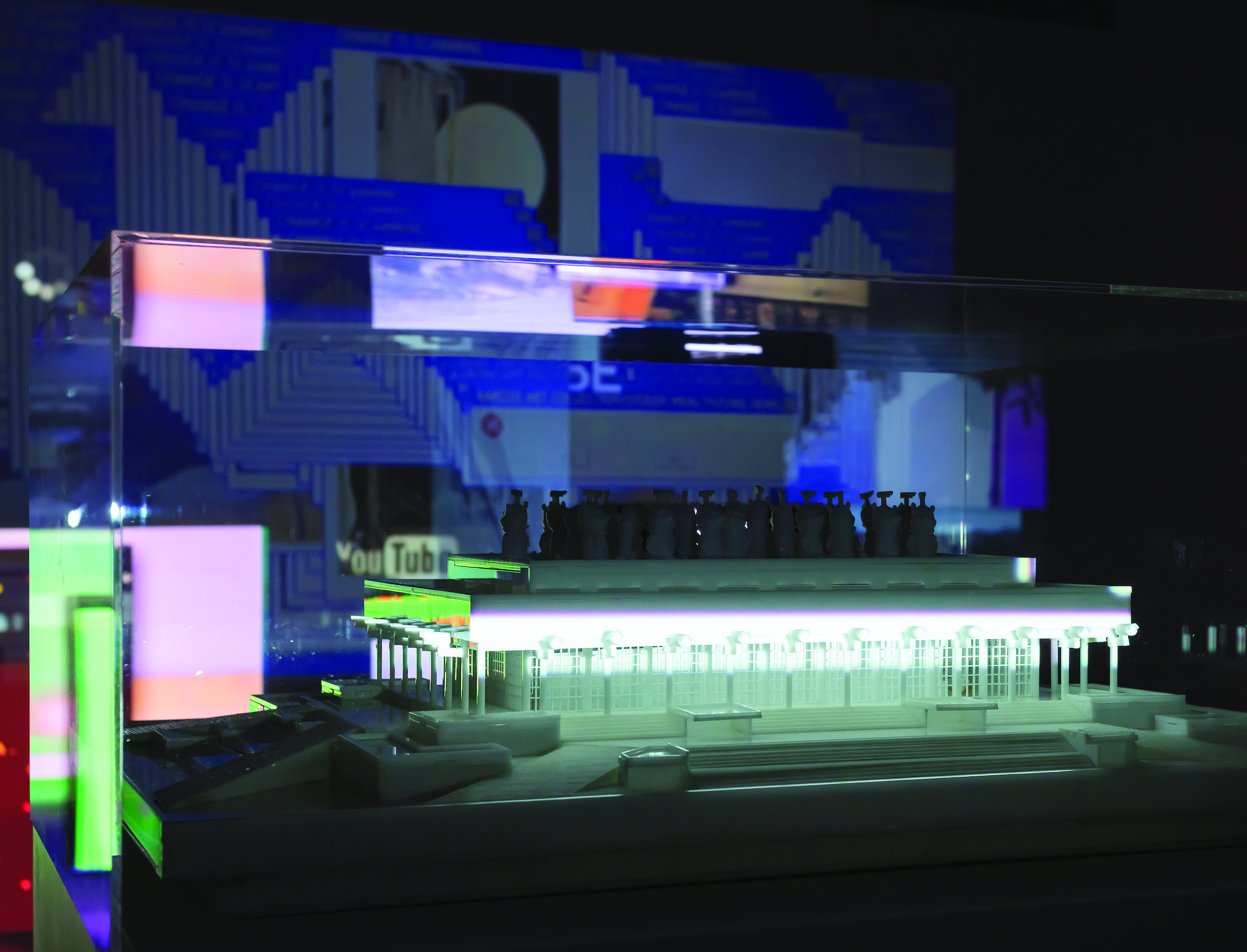
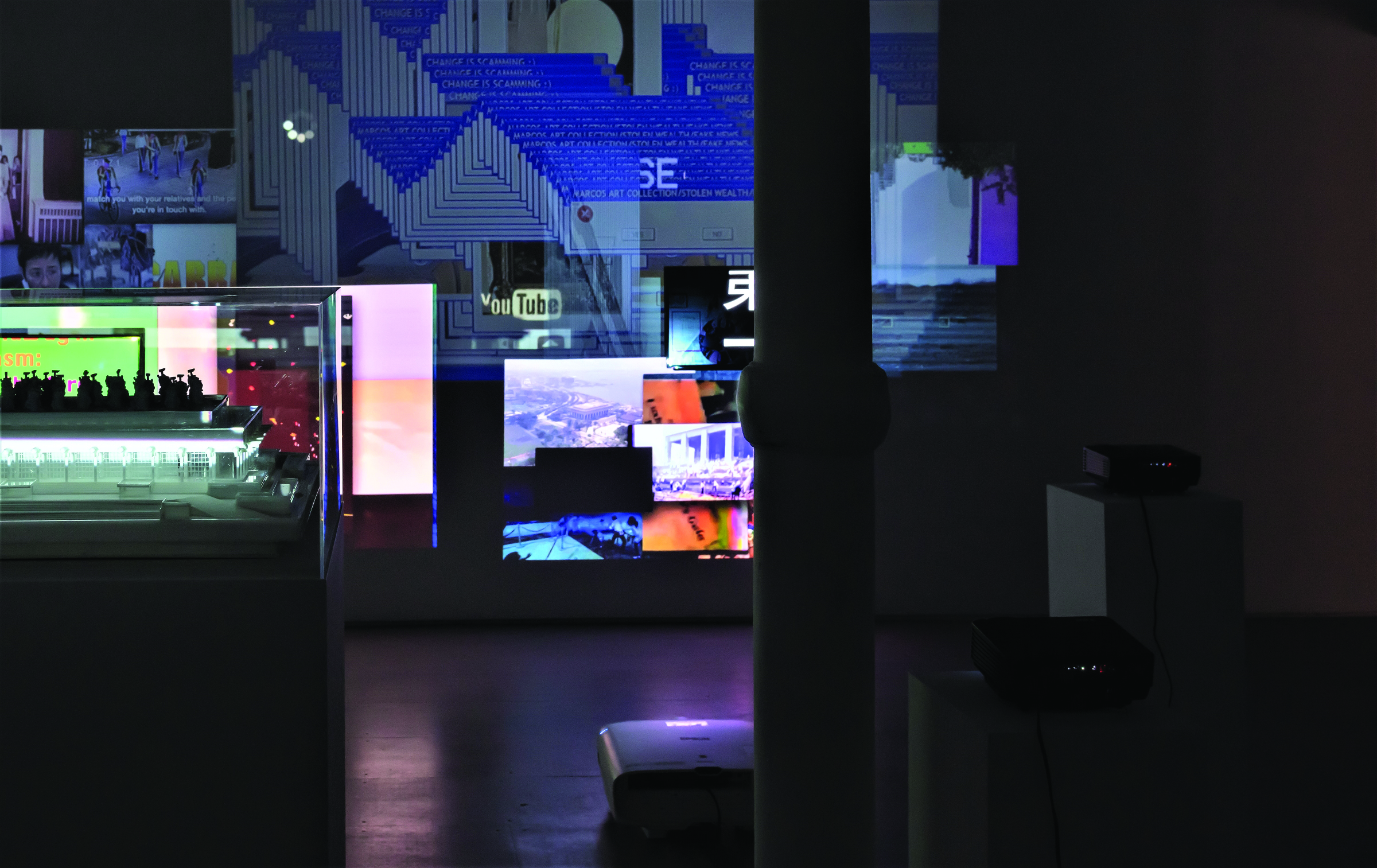
This and previous page: Yason Banal, MIFFED BLUE RETURN (2019), multi-channel video
installation, Manila Film Center sculpture, MIFFED YouTube channel, slowed down WiFi.
Installation view, 47 Canal, New York, 2019. Courtesy the artist.
Yason Banal’s jostling installation centres upon the Parthenon-inspired Manila Film Center, built to provide a venue for the first Manila International Film Festival (MIFF) in 1982, a soft power extravaganza organised at the height of Ferdinand and Imelda Marcos’ plunderous conjugal dictatorship in the Philippines. Scaffolding tragically collapsed during the brutalist design’s hurried construction, fatally trapping a number of workers under quick-drying cement. The constellation around the failed structure and its troubling history of pageantry and power as well as its patrons’ recent, dark, triumphant return is made manifest through video collage, drone painting, hyperlink research, sculpture and intermittent technology. Banal decelerates 47 Canal’s WiFi made accessible to the public through the gallery’s “MIFFED” network (password: MIFFED19)—approximating the Philippines’ slow internet speed by way of the Peso to Dollar buffering exchange rate, as the WiFi transfer is now set in New York like an offshore/online account. Banal scans and extends the ‘extrarchitectural craft’ of MIFF and the Manila Film Center, situating these in dialogue with abstract mechanisms related to crony capitalism, post-truth, cultural patronage and neo-imperialism in the Philippines today.
— from the exhibition text of MIFFED BLUE RETURN, 47 Canal, New York

Pages extracted from Fragments from A Critical Dictionary of Southeast Asia by
Ho Tzu Nyen. Courtesy the artist.
Fallen Map is an installation of concrete rubble the artist gathered from construction sites around Metro Manila on which he painted over patterns of the ubiquitous basahan or trapo of the Philippines—circular cleaning rags made from an assortment of rejected fabric—that are disused and found scattered throughout the streets.

Above: Poklong Anading, bandilang basahan (flag of rags) no. 4 (2016), found rags, hooks, fastener, net, aluminum, 55” LCD flat panel display and media player, 198 x 170 x 160cm. Installation view (detail), Cue From Life Itself, Metropolitan Museum of Manila, 2020. Courtesy the artist.
Right: Poklong Anading, Fallen Map (2008), Acrylic painted on rubble from road works, water and sewage system, 200 pieces. Installation view, Mag:net Gallery, Quezon City, 2008. Courtesy the artist.
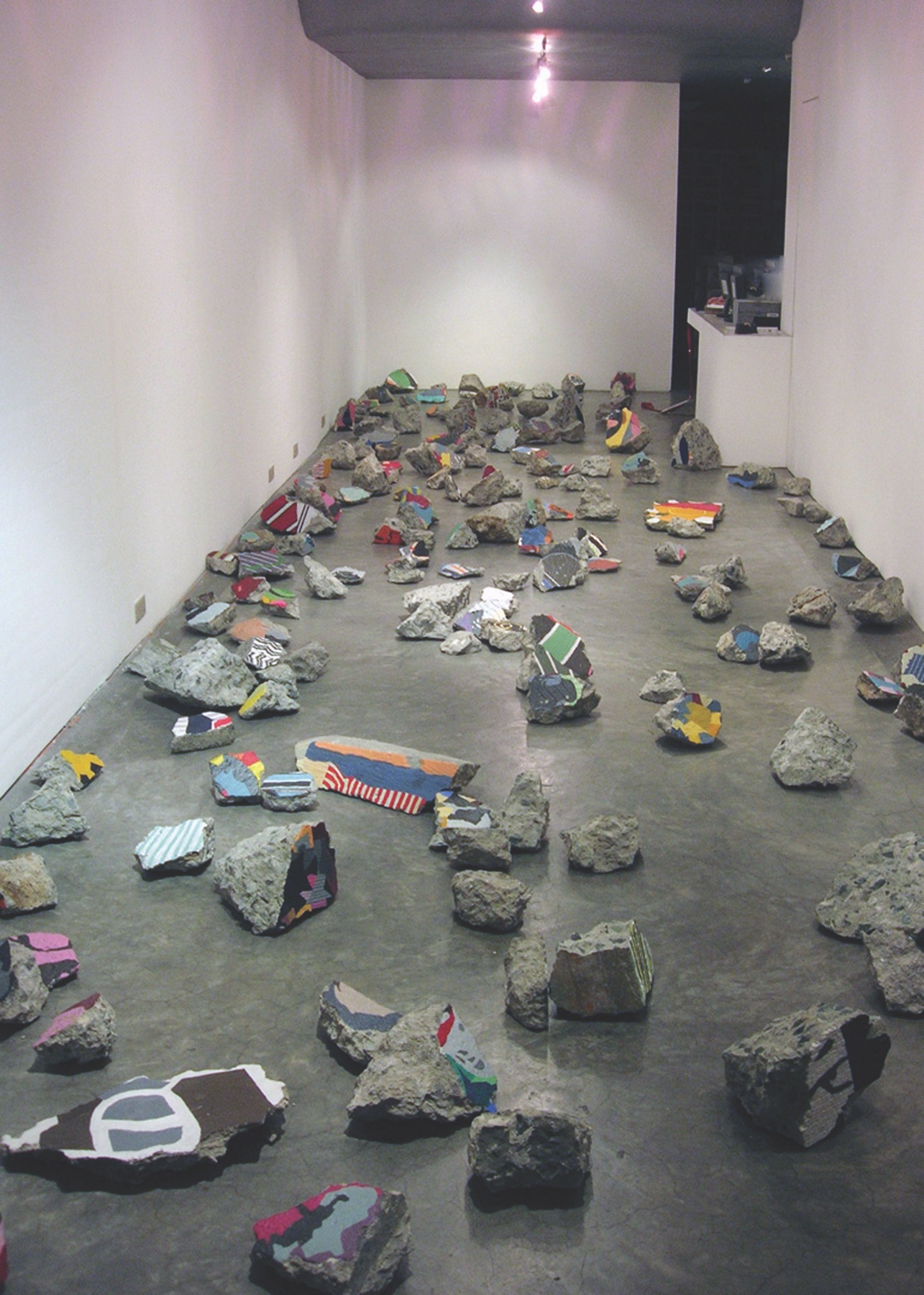
“I spend most of my time far from home and being on the street is like being in another artist’s studio where I accidentally find ideas and resources for my work.”
— Poklong Anading, excerpt from an interview with Asia Art Archive, Hong Kong, 2009.

Poklong Anading, Fallen Map (2008), installation view (detail), Mag:net Gallery, Quezon City, 2008.
Courtesy the artist.
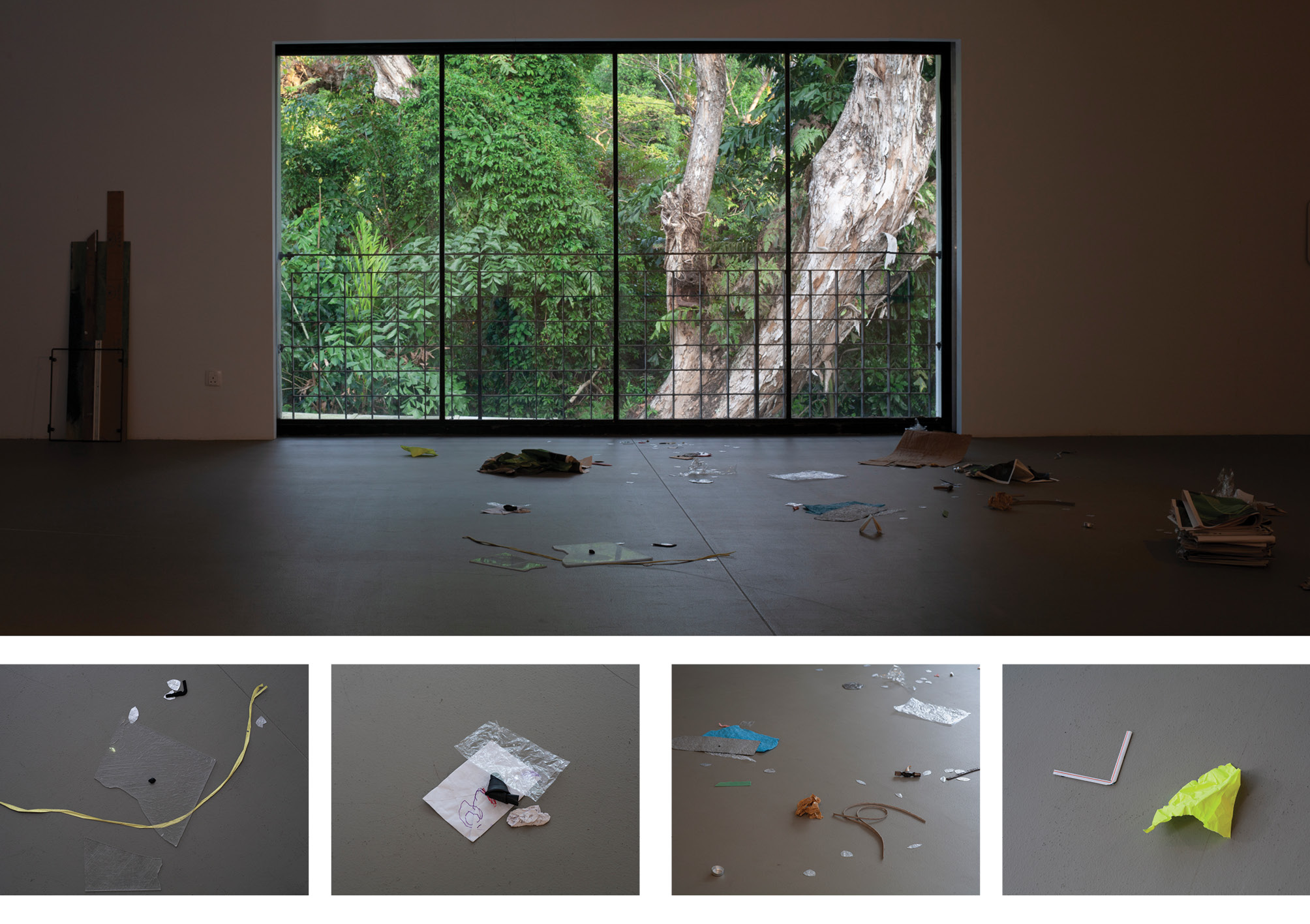
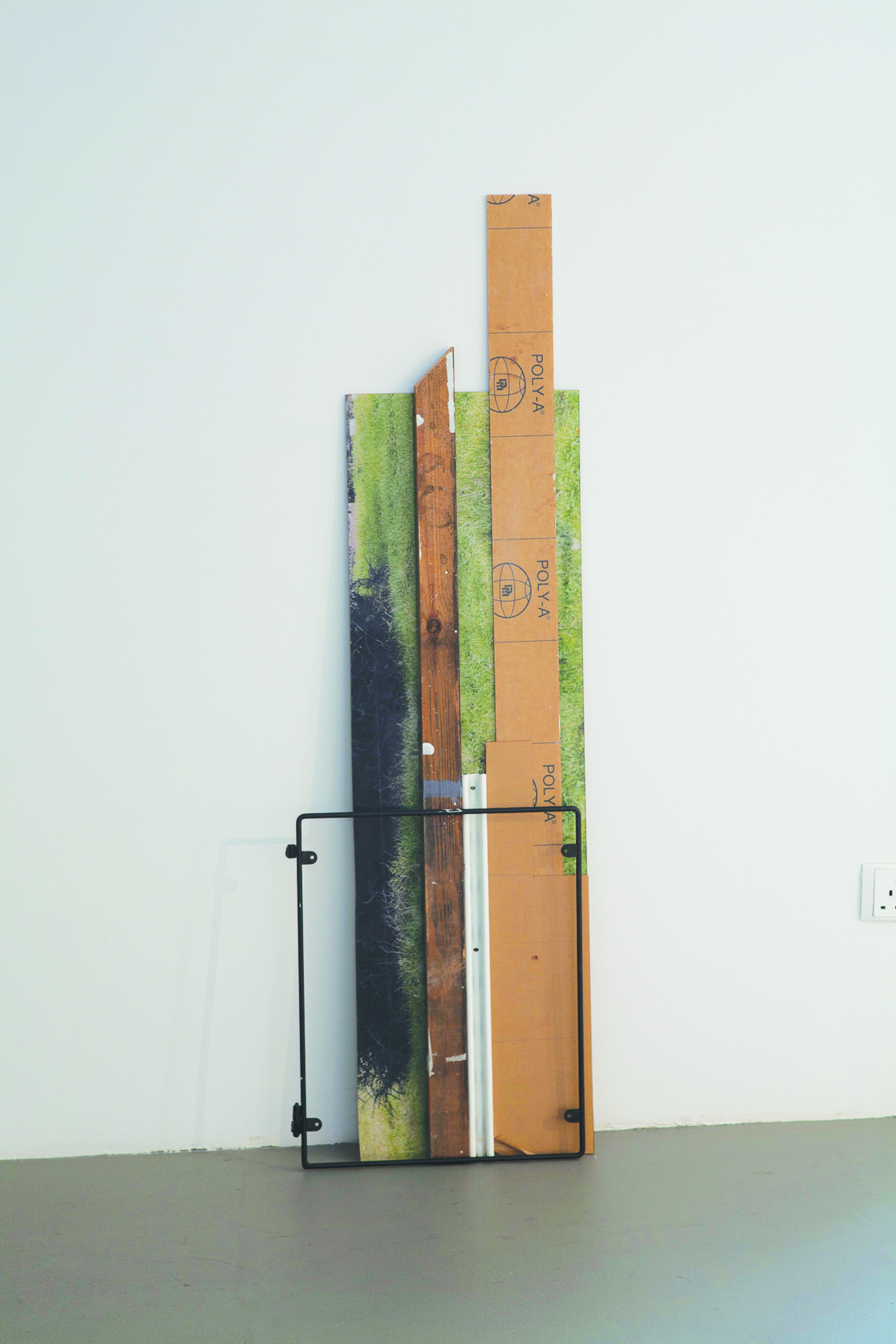
Under The Bodhi Tree (2019) is an installation of found objects—often discarded materials, detached or torn off from its origin—and photographs printed on paper and folded by the artist. Through his subtle manipulations of the object and the image, the relationship between the two-dimensional and the three-dimensional is blurred, creating alternative perceptions.
— From the exhibition text of Side Affects, Ota Fine Arts, Singapore, 2019.


This and previous pages:
Chua Chye Teck, Under The Bodhi Tree (2019), found objects and images printed on recypal
paper, dimensions variable. Installation views, Ota Fine Arts, Singapore, 2019.
Courtesy the artist.
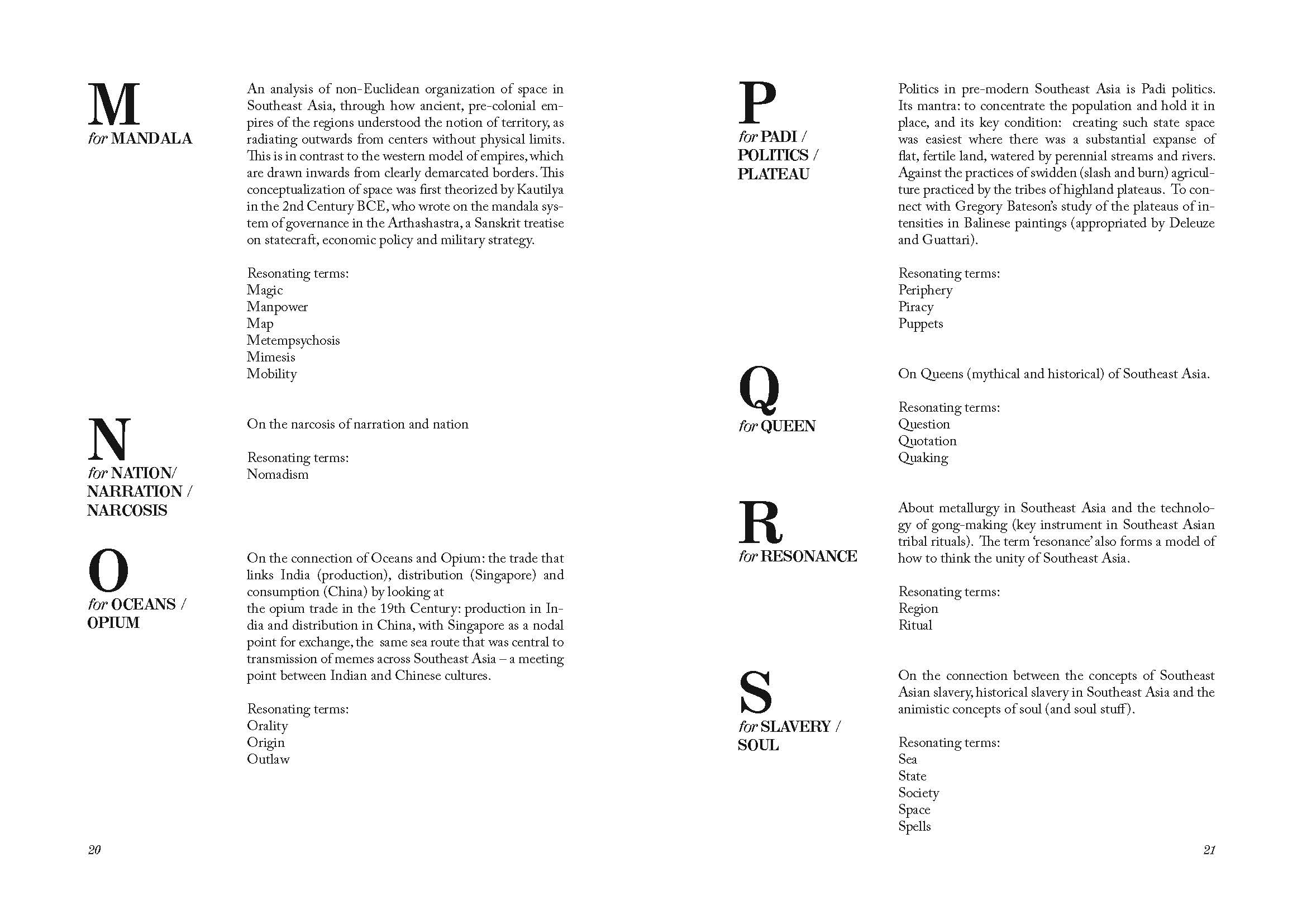
Pages extracted from Fragments from A Critical Dictionary of Southeast Asia by
Ho Tzu Nyen. Courtesy the artist.
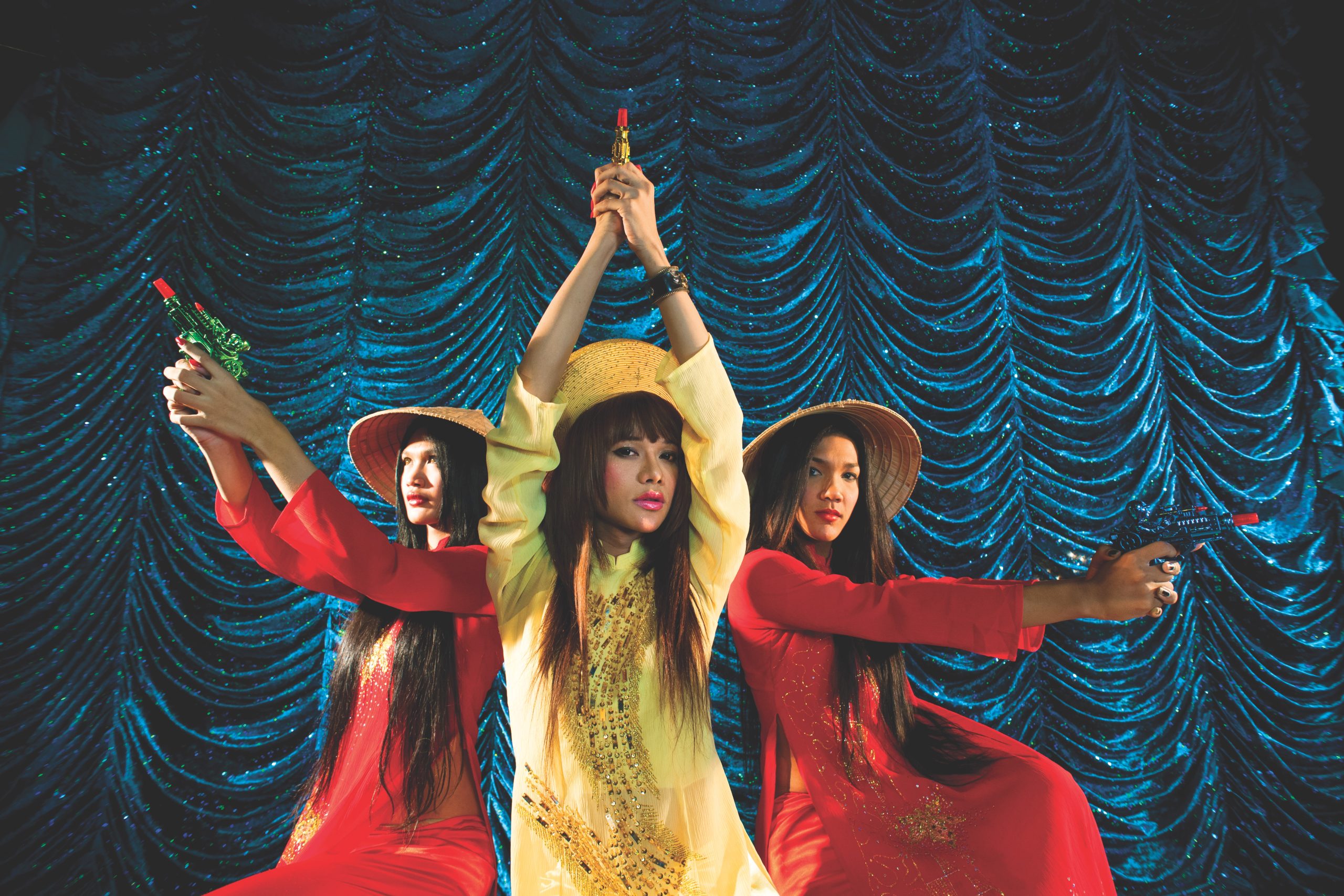
Việt Lê, untitled (Charlie’s Angels of History), still from lovebang! (2012–15).
Courtesy the artist.
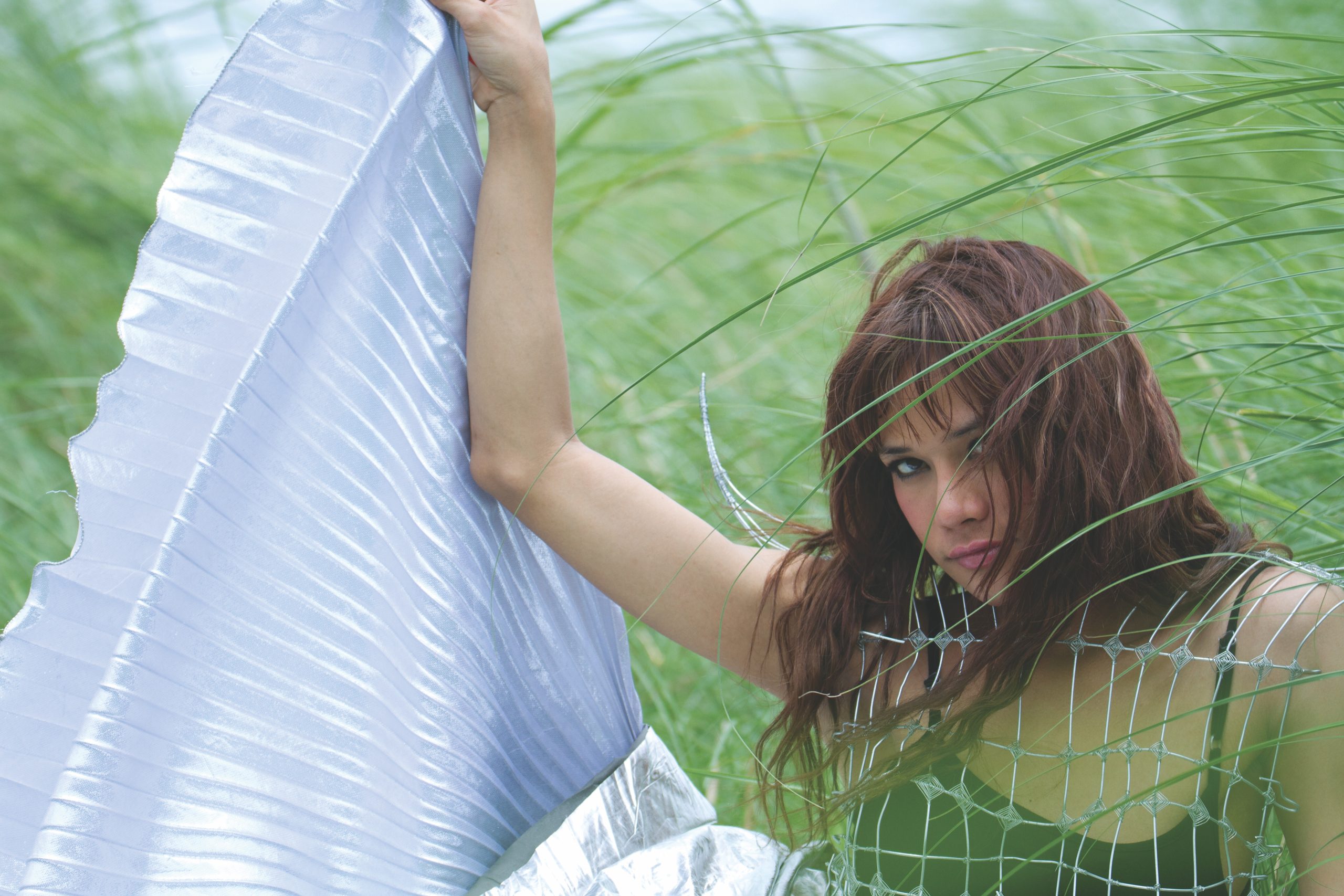
“The project is a time-travelling, trans-love triangle. And it’s trilingual (Vietnamese, Khmer, English). The love bang! trilogy comes from some of my curatorial work and also my academic work, trying to figure out what is the gap between historical trauma and pop culture, particularly pan-Asian popular culture. It seems like many people don’t talk about past wars but there is such an obsession with pop music—what is the relationship between the traumas of history and modernity, between war and pop (and agit-prop)?”
— Việt Lê, excerpt from an interview with CAAMFest, 2016
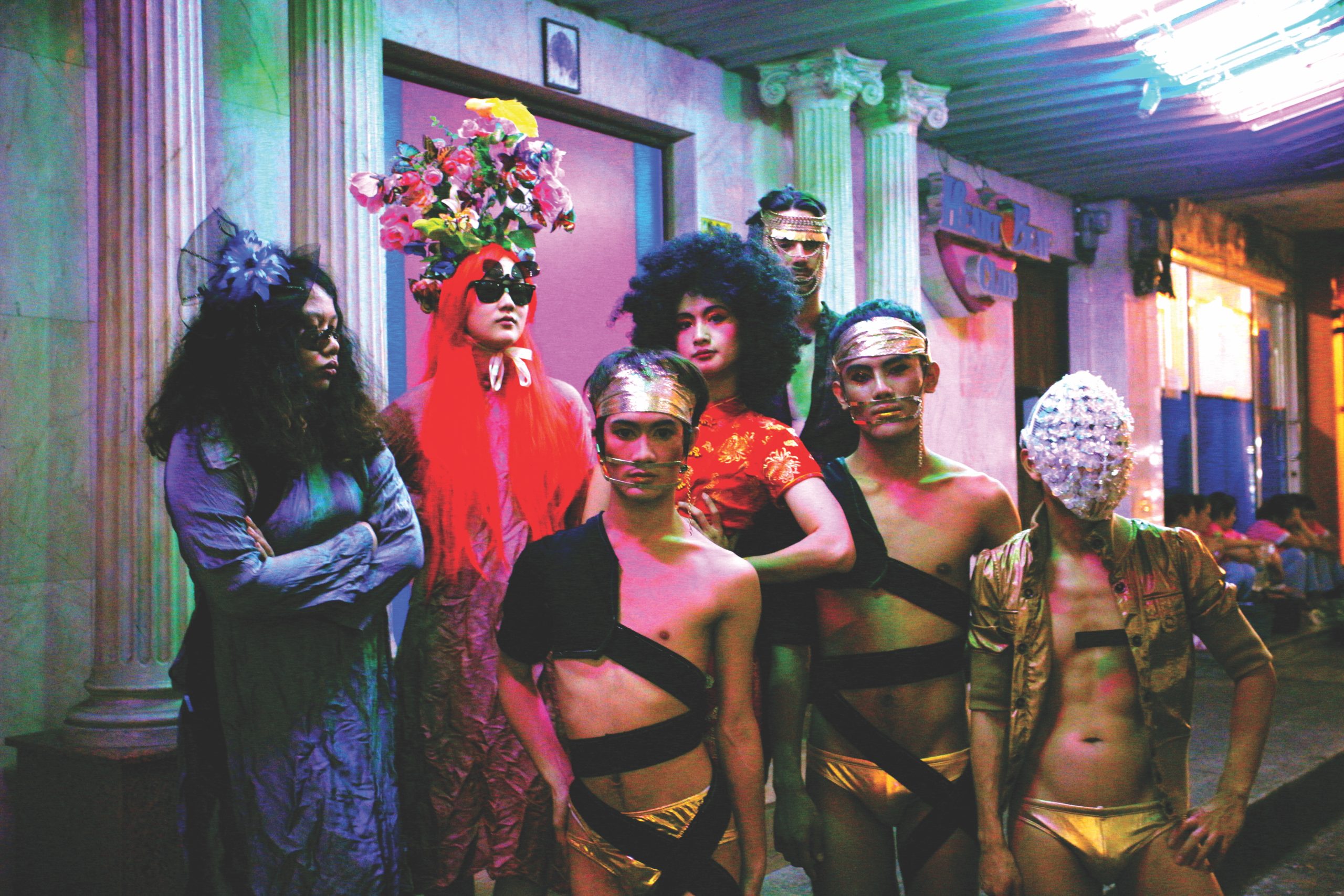
Việt Lê
Left: untitled (Gigi!), still from lovebang! (2012–15)
Below: lonely heARTs cluBand-Aid, still from heARTbreak! (2016–19).
HD video, colour, sound, projection, 1:21 mins. Courtesy the artist.
“During the Viet Nam War, nhac vang or ‘golden music’—love ballads about loss was banned by the Vietnamese government for its potentially subversive content. The 1960s and 70s was dubbed as a ‘golden era’ of Cambodian rock; many of its stars disappeared during the Khmer Rouge genocide. Today, the explosion of pan-Asian youth culture and pop music obscures traces of the recent past in both countries. In contemporary Viet Nam, Japan, China, Cambodia, and Korea (among other Asian countries), there has been an emergence of popular cultural production (music, films, soap operas) [which] questions the boundaries of community, identity and identification. How are national and consumer desires linked? The rise of bull markets may presage the rise of pop markets, including J-Pop, V-Pop, and hallyu.”
— Việt Lê, excerpt from an interview with diaCRITICS, 2012.
(https://diacritics.org/2012/10/love-bang/)
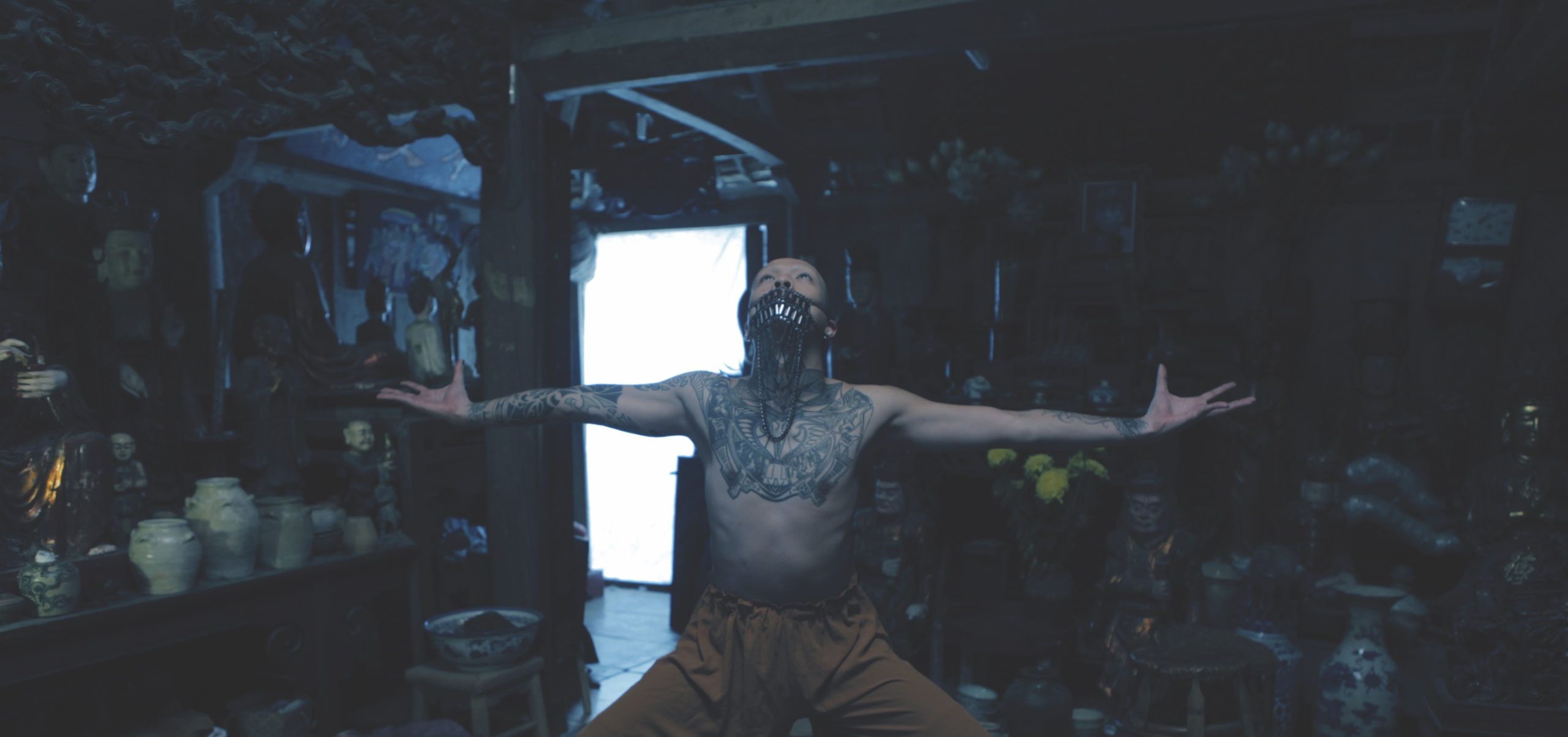
Việt Lê, untitled (buddhalicious), still from eclipse (2017-19). Courtesy the artist.

Page extracted from Fragments from A Critical Dictionary of Southeast Asia by
Ho Tzu Nyen. Courtesy the artist.
The Critical Dictionary of Southeast Asia (cdosea) begins with a question: what constitutes the unity of Southeast Asia—a region never unified by language, religion or political power? cdosea proceeds by proposing 26 terms—one for each letter of the english / latin alphabet. Each term is a concept, a motif, or a biography, and together they are threads weaving together a torn and tattered tapestry of Southeast Asia. […] Since 2016, Ho Tzu Nyen has been working with a group of collaborators to manifest the dictionary as a whole. With Berlin-based programmers and platform creators Jan Gerber and Sebastian Lütgert (0x2620), a platform for absorbing and annotating online audiovisual materials was created to feed an editing system endlessly composing new combinations of audio-visual materials according to the 26 terms of the dictionary. […] cdosea is a platform facilitating ongoing research, a matrix for generating future projects and an oracular montage machine. https://cdosea.org/#video/a
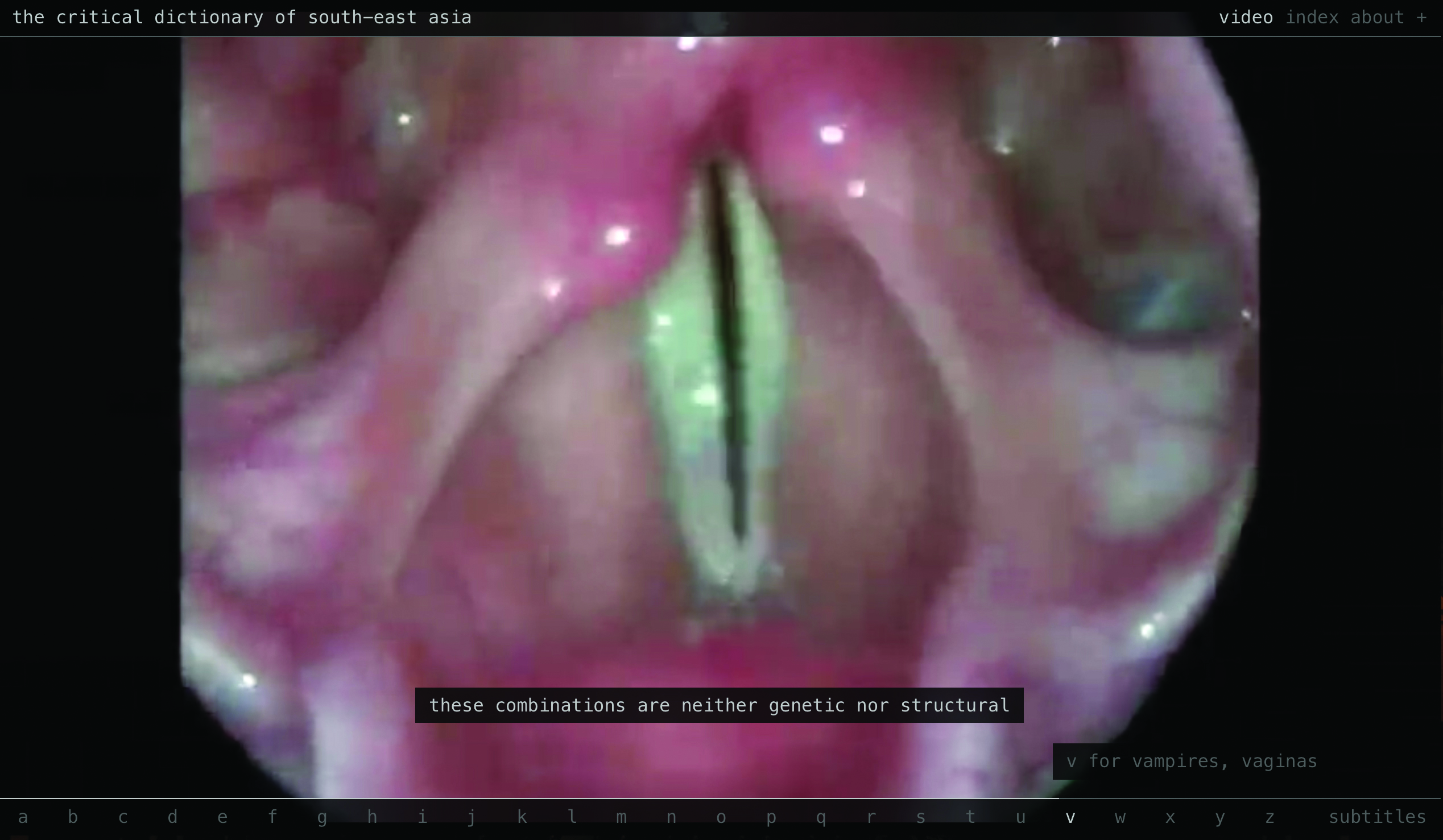
Ho Tzu Nyen, The Critical Dictionary of Southeast Asia (2012–ongoing),
screenshot from cdosea.org. Courtesy the artist.

Ho Tzu Nyen, The Critical Dictionary of Southeast Asia (2012–ongoing),
screenshot from cdosea.org. Courtesy the artist.
Artists’ Bios
Poklong Anading’s (Philippines) work ranges from video, installation, photography, to drawing and painting. A keen observer and explorer of a mutating ecology, his practice is marked with an investigative character and an interactive approach. Many of his projects are based on the notion of deductive research—collecting as an act: a method to extract the essential but then portray the organic appropriateness of dissimilarity. He has participated in exhibitions at the Asian Art Museum (San Francisco, California, United States); Zentrum fur Kunst und Medientechnologie (Karlsruhe, Germany); Yokohama Museum of Art (Japan); Singapore Art Museum; Asia Society Museum (New York, United States); and Minsheng Art Museum (Shanghai, China). His work was shown in the 5th Asian Art Biennale (Taichung, Taiwan); and twice in the Gwangju Biennale, South Korea (2002 and 2012). Anading’s work is in the collection of Singapore Art Museum, Mori Art Museum (Tokyo, Japan) and Guggenheim Foundation (New York, United States). He has received several notable awards in the Philippines including the Ateneo Art Awards in 2006 and 2008, the Thirteen Artists Awards in 2006, and the 12th Gawad CCP for Experimental Video in 2000.
Yason Banal (Philippines) is an artist whose work moves between installation, photography, video, performance, text, curating, and pedagogy, exploring myriad forms and conceptual strategies in order to research and experiment with associations and refractions among seemingly divergent systems. He was in residencies at the Rijksakademie (Amsterdam, Netherlands) and Arts Initiative Tokyo (Japan), and has held visiting lectureships at London Metropolitan University and Tokyo National University of Fine Art and Music. His works have been exhibited widely including at the Tate Modern, Frieze, Vargas Museum, Christie’s, Singapore Biennale, Shanghai Biennale, Asia Pacific Triennial, and more recently at National Taiwan Museum of Fine Arts, Asia Film Archive and Venice Architecture Biennale. Banal obtained a BA Film at the University of the Philippines, MA Fine Art at Goldsmiths, University of London. He currently teaches at the University of the Philippines Film Institute and heads its Film Center.
Growing up in a family of carpenters, Chua Chye Teck (Singapore) has always had an affinity with wood and the three-dimensional form but had chosen instead to challenge himself by working with photography as a medium. His photographic series, Beyond Wilderness (Singapore: Epigram Books, 2016) is the culmination of a decade in photography practice where he has explored different ways of presenting his views on found objects, spaces, and nature. Both sculpture and photography have their respective technicalities and Chua’s recent interest in returning to sculpture follows an urge to focus on creating from scratch rather than reacting to a given scenario. In his recent work, shown as part of Side Affects at Ota Fine Arts Singapore, Chua works between photography and found objects and “treats the printed image almost sculpturally, paying special attention to its materiality and its interaction with light and space” (curator Tan Guo Liang, exhibition text of Side Affects, Ota Fine Arts, Singapore, 2019). He has participated in a one-year residency at the Künstlerhaus Bethanien (Berlin, Germany) in 2009 and his work is in the collection of Singapore Art Museum.
Premised on complex sets of references, the artistic production of Ho Tzu Nyen (Singapore) harnesses film, video, performance, and installation. His richly layered and technically challenging works weave together fact and myth to mobilise different understandings of Southeast Asia’s history, politics, and belief systems. His ongoing multi-part work, the Critical Dictionary of Southeast Asia has, since its inception in 2012, generated a number of filmic, theatrical and installation works including One or Several Tigers (2017), Timelines (2017), The Name (2015), The Nameless (2015), 2 or 3 Tigers (2015), and Ten Thousand Tigers (2014). Recent solo exhibitions were held at Edith-Russ-Haus For Media Art, Oldenburg, Germany (2019); Kunstverein in Hamburg, Germany (2018); Shanghai Ming Contemporary Art Museum, China (2018); Asia Art Archive, Hong Kong (2017) amongst others. His works have also been included in major group exhibitions such as: Aichi Triennale, Japan (2019); Sharjah Biennial 14, United Arab Emirates (2019); Gwangju Biennale, South Korea (2018); Dhaka Art Summit, Bangladesh (2018) among many others. He is co-curator of the 7th Asian Art Biennal, Taichung, Taipei (2019). Ho represented Singapore at the 54th Venice Biennale (2011).
Việt Lê (Vietnam) is an artist, writer, curator, and academic based in California, United States. His recent projects have been collaborative and based on working with other cultural producers such as artists, designers and cinematographers. Transversing the disciplines of visual studies, ethnography, queer theory and diasporas histories, his works have employed the vocabulary of popular music videos and fashion to speak of the overlaps of historical and personal traumas as they manifest in representations of identity, spirituality and sexuality. Lê has recently presented his work at Pitzer College Art Galleries, Claremont, United States (2018); and Bangkok Art and Culture Center (BACC), Thailand (2013); and in the solo exhibition lovebang! at Kellogg University Art Gallery, Los Angeles, United States (2016). He is a co-founder of The Diasporic Vietnamese Artists Network (DVAN) and is Associate Professor in Visual Studies at California College of the Arts, San Francisco, United States. He is also a board member of the Queer Culture Center and has been a panellist for Art Matters, Camargo Foundation, amongst others. His writing has been translated into Chinese, German, Khmer, and Vietnamese.
Manifest in the works of Zhao Zhao (China) is a persistent interest in Chinese history, tradition, craft, culture and a keen observation of life. Subtle expressions of individualism figure strongly throughout his artistic practice: from obscure acts that playfully challenge the regulated social and ideological sphere, absurd representations of social phenomena, to witty commentary on the economy of (ethical and cultural) values. Recent solo exhibitions were held at Mizuma Gallery, Singapore (2019); Roberts Project, California, United States (2019); and Tang Contemporary Art, Hong Kong (2018). Zhao Zhao has participated in numerous exhibitions in China, United States, United Kingdom, Italy, Germany, Ukraine, Spain, Belgium, Thailand, Hong Kong, Japan, and Australia. His works are in the public collections of Daimler Art Collection, Berlin, Germany; DSL Collection, Paris, France; The Guy & Myriam Ullens Foundation, Switzerland; Tiroche DeLeon Collection, Frankfurt, Germany; and White Rabbit Collection, Sydney, Australia. In 2019, he won the Artist of the Year Award in the 13th Annual Award of Art China (AAC) and in 2017, he was shortlisted for the Young Artist of the Year Award in the 11th AAC.

